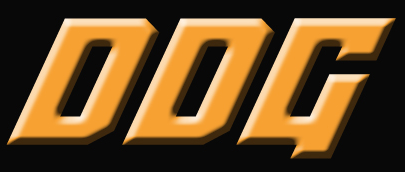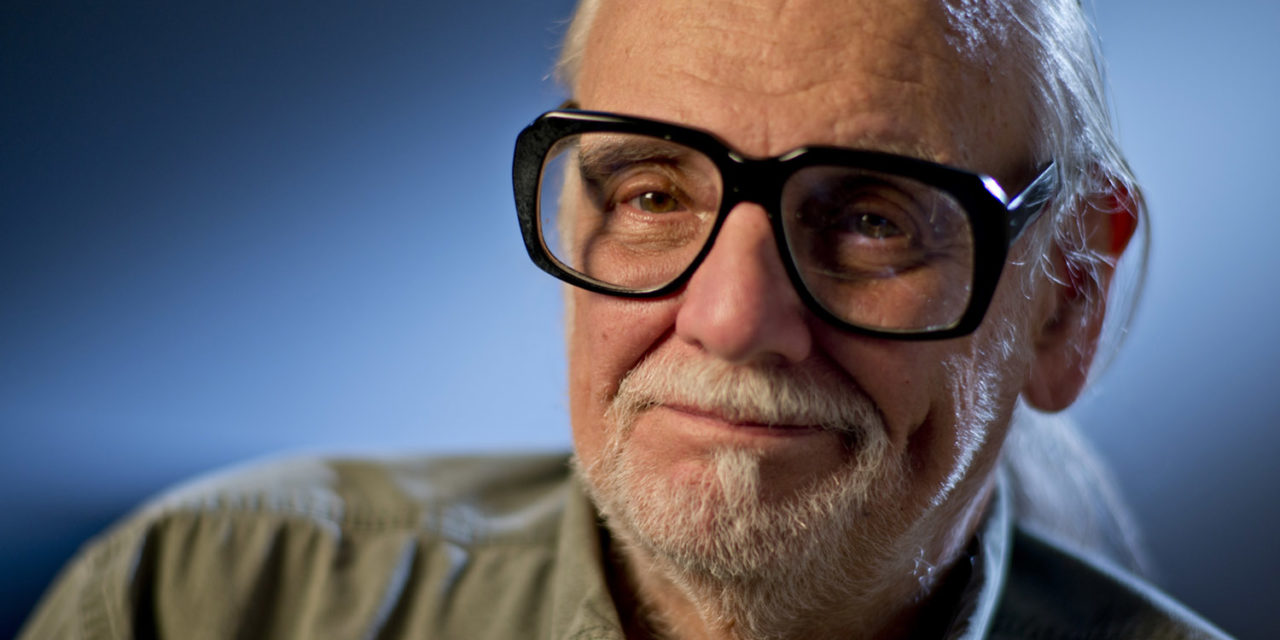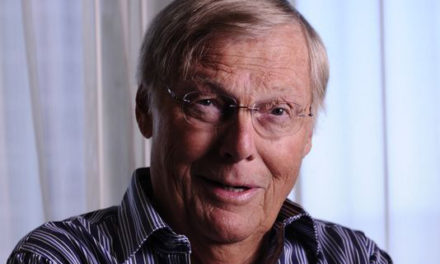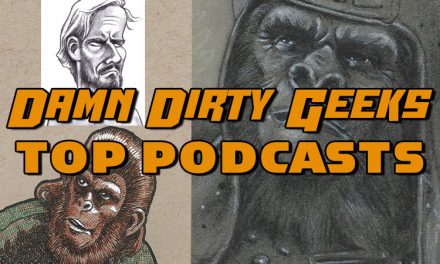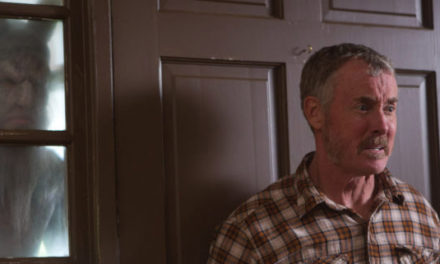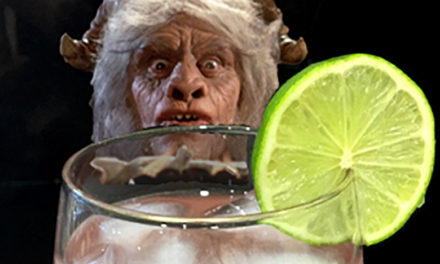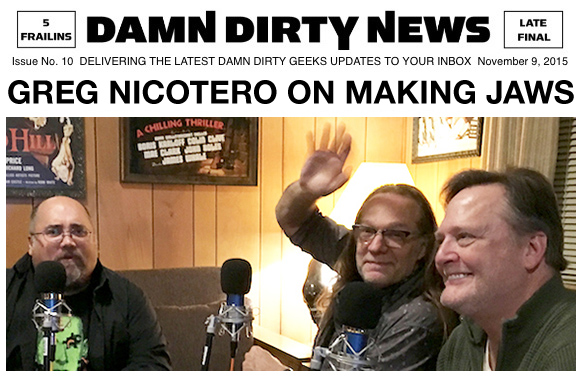The Damn Dirty Geeks are saddened by the news that iconoclast writer/director/producer George A. Romero has passed away at age 77.
Romero has been a favorite subject on our podcast since we started the show, most notably in our discussions with director and makeup effects creator Greg Nicotero, discussing the start of his own career that was highly influenced by Romero’s films and mentorship. You can revisit our talk on Romero with Greg in our episode More JAWS and DAWN OF THE DEAD.
It’s an easy guess to make that Romero and his films were and continue to be a lasting influence on our own lives and careers and fans, filmmakers, storytellers and creators. As for millions, Romero’s shocking landmark 1968 film NIGHT OF THE LIVING DEAD sunk its teeth into our psyches and imaginations, with its dry, documentary-like approach to a gruesome horror story. This film, once relegated to only the “cult classic” bin of film history, has risen from its humble beginnings to spawn an entire genre of zombie films and entertainment that modern audiences devour en masse.
Romero’s straightforward storytelling style deftly camouflaged the director’s incisive social satire that the real horrors in this world are our fellow human beings, not monsters from outer space or ancient mythology. This is a thematic bell that Romero would toll throughout his career that included five sequels to NIGHT: DAWN OF THE DEAD (1978), DAY OF THE DEAD (1985), LAND OF THE DEAD (2005), DIARY OF THE DEAD (2007) and SURVIVAL OF THE DEAD in 2009. Romero also wrote the 1990 remake of NIGHT OF THE LIVING DEAD directed by Tom Savini.
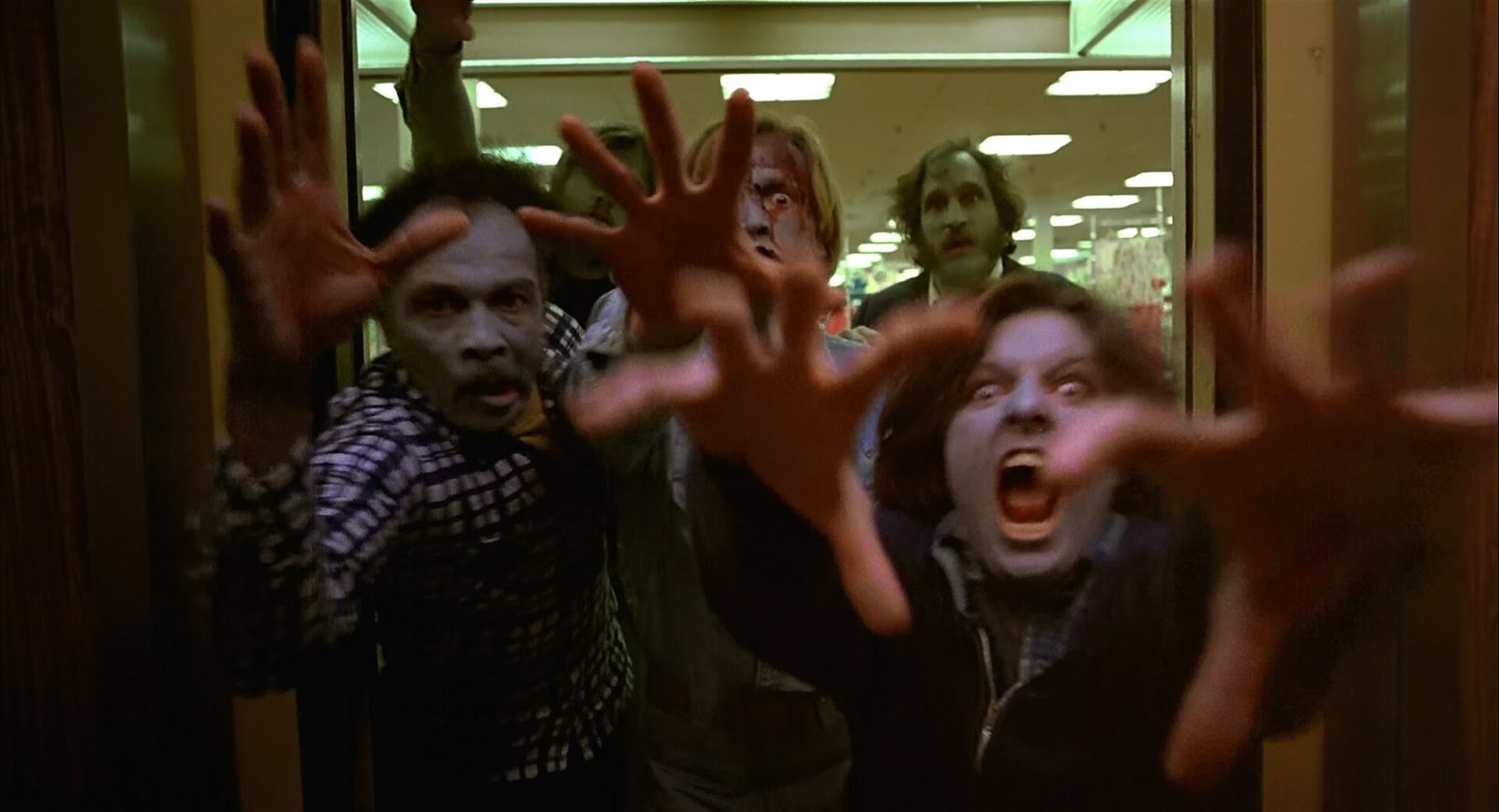
Living ghouls attack at the mall in George A. Romero’s 1978 sequel DAWN OF THE DEAD.
Yet Romero’s career extended far beyond the shambling pace of walking ghouls, with more obscure releases like THERE’S ALWAYS VANILLA (1971), HUNGRY WIVES (1972) and THE CRAZIES in 1973. The same year DAWN OF THE DEAD stalked into theaters, Romero also helmed the strange vampire tale MARTIN. Romero’s KNIGHTRIDERS (1981) tracked its own path with star Ed Harris leading a group of historic re-enactors on an increasingly delusional quest to recreate the legend of King Arthur on the back of motorcycles. His 1982 collaboration with author Stephen King to salute the gory glory days of EC horror comics in CREEPSHOW was a delightful celebration of pulp comic crimes, cruelty and revenge — yet another film in Romero’s repertoire that proved to be far ahead of its time and thus bound to remain relevant decades later.
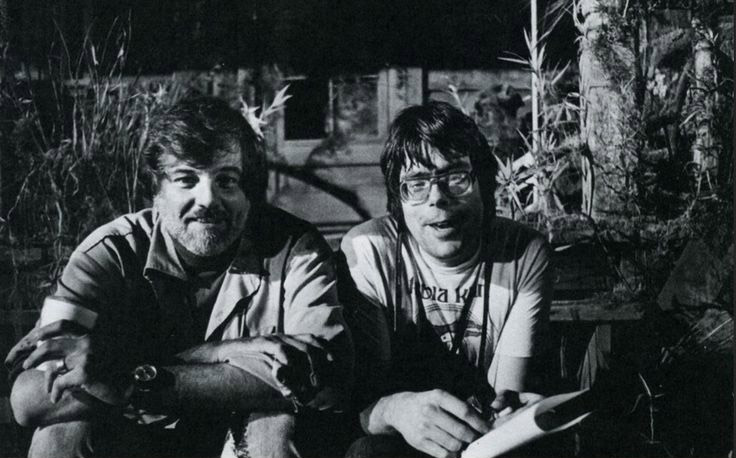
Director George A. Romero and writer/actor Stephen King on the set of CREEPSHOW.
Lasting relevancy has been a repeated result across Romero’s lengthy career. His stories and films often registered a seismic impact on audiences and critics upon their release, often misunderstood or simply under appreciated for their ingenuity or audacity. Those seismic waves rippled across the years, disrupting or captivating new audiences, new fans and winning over critics as our social context changed around Romero’s films, pushing them back into the spotlight of cultural relevance again and again.
To lean on the well-worn conceit he helped create: Romero’s films, his attitude and art can never die, even if their creator has left us behind on this mortal plane. George A. Romero will continue to influence, challenge, enthrall and inspire future generations of fans and creators, just like he has for the entire DDG cast and podcast guests. We will miss George deeply, but our appreciation and gratitude remain more deeply felt in his absence.
The Damn Dirty Geeks plan to record a tribute podcast episode to George Romero as soon as we can, so watch our site and social media for announcements on when we’ll publish this show.
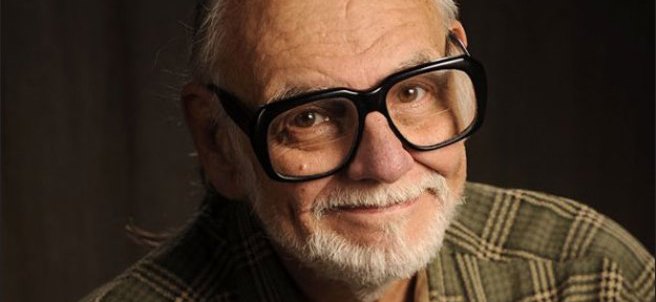
“Damn Dirty Geeks” is © 2014 Sketchy Things Productions. All rights reserved.
You can find further info and episode show notes on our Damn Dirty Geeks Facebook page. Artwork is © 2001 Frank Dietz.
